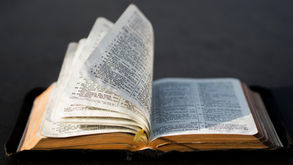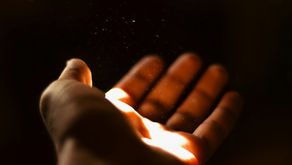Dr. Ronald Mcnair - second African American to go into space
- Uplifting Words

- Dec 9, 2018
- 3 min read
Updated: Jan 6, 2019

Dr McNair died alongside his six astronaut colleagues: spacecraft commander, Mr. F.R. Scobee, the pilot, Commander M.J. Smith (USN), mission specialists, Lieutenant Colonel E.S. Onizuka (USAF), and Dr. J.A. Resnik, and two civilian payload specialists, Mr. G.B. Jarvis and Mrs. S. C. McAuliffe. They were all part of the crew of the ill-fated Challenger space shuttle which exploded shortly after launch from the Kennedy Space Centre in Florida.
Dr McNair was born on 21st October 1950, in Lake City, South Carolina, and had to battle with racism and discrimination from a very early age.
The second of three boys born to Carl, a mechanic, and Pearl, a teacher, McNair displayed an early aptitude for technical matters, earning the nickname "Gizmo."
When he was nine he attempted to borrow books from his local public library, the Lake City Library, only to discover that ‘public’ meant that only whites could borrow books. This service was inaccessible to black people owing to the senseless Jim Crow laws of the time. Young McNair, however, politely insisted that he borrow the books. The police and his mother were called in to the library, but in the end he was allowed to leave with the books he desired.
This sense of tenacity combined with his affinities to science and technology propelled him through his brief but very impactful life. He received his Bachelor of Science in Physics from North Carolina AT&T State University in 1971, and a PhD in Physics from the Massachussetts Institute of Technology (MIT) in 1976. He also received honorary doctorates from North Carolina AT&T State University, Morris College and the University of South Carolina.
While studying at MIT, and at the Ecole D’ete Theorique de Physique in France, Dr. McNair did critical research into the development of hydrogen fluoride/deuterium fluoride (HF/DF) and high-pressure CO lasers. He became a staff physicist with Hughes Research Laboratories in Malibu, California, developing lasers for isotope separation and photochemistry among other areas of research and development.
Of the 11,000 applicants, McNair was one of 35 selected as a NASA astronaut candidate when he was 28 years old in January 1978. A year later, in 1979, he qualified as a mission specialist astronaut on Space Shuttle flights.
McNair was the second African American to go into space. In February 1984, he was a mission specialist on STS 41-B, which was the fourth flight of the space shuttle Challenger and NASA’s 10th space shuttle mission. One of his jobs was to operate the shuttle’s robot arm.
Fellow astronaut Charlie Bolden — now NASA’s top administrator — said this to Ebony magazine in 1986: “I don’t think any one person could have kept up with Ron to know all the things that he was into. He was absolutely phenomenal. I know he slept, but I’m not sure when. He never had a normal time that was day or night. Ron did things until they were finished, and if that meant going past midnight, then he did.”
On January 28, 1986, he was one of the seven crew members killed when the Challenger shockingly exploded 73 seconds after liftoff.

McNair first encountered the Baha'i Faith as a very young person in the early 1960s in his hometown of Lake City, SC, through spiritual education classes taught by two local women, Genelle Grimsley and Clarice Stevens. He maintained his Baha'i membership until the end of his life. Friends noted that he took fellow-astronauts to a Baha'i meeting the night before the fatal flight, and that he had his book of Baha'i prayers with him when the Challenger exploded.
Dr McNair, who is survived by his wife Cheryl and two children Reginald and Joy, was a music lover and an accomplished saxophonist. He worked with the French composer, Jean Michel Jarre on a piece of music for Jarre’s album Rendez-Vous. Dr McNair, an adherent of the Baha’i Faith, was supposed to have been the first person to record a saxophone solo in space aboard the Challenger. He was also a martial arts enthusiast – the holder of a 5th degree Karate blackbelt and the winner of the AAU Karate Gold Medal (1976) and five regional Blackbelt championships.

Dr McNair has been the recipient of numerous post-humous honours. MIT, his alma mater has a McNair Building which houses the Kavli Institute for Astrophysics and Space Research; the US Department of Education offers the Ronald E McNair Post-Baccalaurate Achievement Program; the McNair crater on the moon is named after him; and in a twist of irony, the Lake City Library was dedicated in 2011 as the Ronald McNair Life History Centre.




















